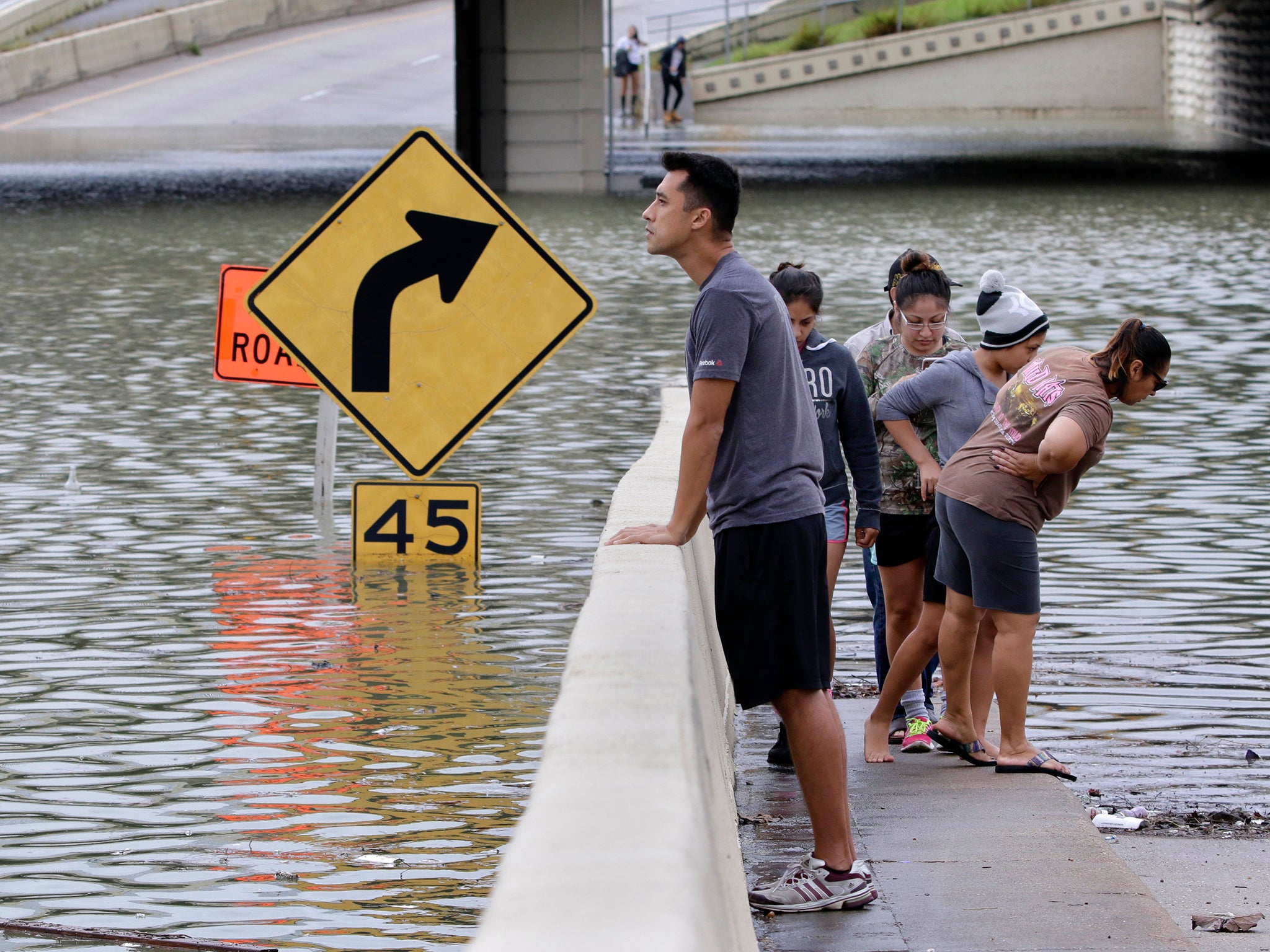Harvey: Houston officials to relieve pressure on city dam in move that could cause further flooding
The massive amounts of rain have put an intense pressure on the city's reservoirs

Your support helps us to tell the story
From reproductive rights to climate change to Big Tech, The Independent is on the ground when the story is developing. Whether it's investigating the financials of Elon Musk's pro-Trump PAC or producing our latest documentary, 'The A Word', which shines a light on the American women fighting for reproductive rights, we know how important it is to parse out the facts from the messaging.
At such a critical moment in US history, we need reporters on the ground. Your donation allows us to keep sending journalists to speak to both sides of the story.
The Independent is trusted by Americans across the entire political spectrum. And unlike many other quality news outlets, we choose not to lock Americans out of our reporting and analysis with paywalls. We believe quality journalism should be available to everyone, paid for by those who can afford it.
Your support makes all the difference.Officials in Texas are planning a controlled release of reservoir waters, a decision that is expected to flood at least two neighbourhoods and submerge roadways.
The Army Corps of Engineers began controlled release of reservoir water over the weekend, as communities in Houston and along the Texan Gulf Coast struggled to respond to the fallout of tropical storm Harvey — which made landfall as a powerful hurricane. Houston has seen heavy flooding, and has left thousands stranded.
Rescue workers and emergency teams have been rushing to help people stranded by the devastating and historic flooding following Harvey’s landfall, which has seen a swell of rising rivers and floodwaters that have submerged homes and cars.
President Donald Trump has issued a state of emergency in both Texas and Louisiana, which may see flooding related to the storm that has drenched Houston and its surrounding areas. Vice President Mike Pence, in a radio interview, said that he expects Congress to approve a funding package to assist in recovery efforts to respond to Harvey, and noted that more than 8,000 federal officials were in the area, and that they had shipped more than 1.2 million meals and one million liters of water to the area.
At least five people have been reported dead because of Harvey, though officials in the hardest hit areas expected the number of fatalities to rise once floodwaters receive.
Houston Police Chief Art Acevedo, during a press conference Monday, said that his emergency response services have received about 6,000 calls for emergencies and rescues. At least 2,000 people have already been rescued from flooding in Houston, he said. Other Houston officials indicated that there were about 185 critical rescue requests.
But, even days after the official landfall of the hurricane, the city and entire region is still getting drenched by rainfall related to the storm. That continued rainfall has forced the US Army Corps of Engineers to move up the planned release of water from the reservoirs, saying that they were hoping to do so in order to prevent more homes from being damaged by the flooding.
Shelters have been opened up all around Texas in order to help the expected 30,000 people who may be forced into shelter as a result of the flooding. There were about 5,500 people in shelters as of Monday afternoon, according to Houston Mayor Sylvester Turner.
“The goal is rescue,” Mr Turner said during a briefing. “That’s the focus of the day.”
Several police departments have responded to help in that effort, and officials have asked private citizens with high-water vehicles and boats to assist in rescue efforts. Reports have indicated that private citizens have responded to those calls, taking their boats onto flooded residential streets in search of people stranded by the waters.
Still, while floodwaters appeared to let up in parts of Houston, and some streets were dry Monday morning, the floodwaters have left behind abandoned cars on roadways and intersections.
The National Weather Service has predicted that some parts of Texas may see as much as 50 inches of rain, which would be the highest recorded total in the state’s history.
“We have not seen an event like this,” William Long, the administrator of the Federal Emergency Management Agency, said in a press briefing. “You could not draw this forecast up. You could not dream this forecast up.”
The state had mobilised more than 3,000 national and state guard troops to help with relief efforts, according to Governor Greg Abbott. Mr Abbott later announced that he would moblise the entire Texas National Guard - roughly 12,000 troops to help the response.
Officials are expecting recovery in Houston — the important centre for America’s energy industry — had suffered billions of dollars in damages. It would take years for the city to fully recovery, they said, and indicated that gas prices were likely to spike in the next few days.
Texas National Guard troops are serving distressed communities all over southern Texas, and search-and-rescue teams have been deployed in Lockport. Engineers have responded in Corpus Christie. Another search-and-rescue unit was also being staged in San Antonio, and was expected to be deployed shortly, officials said.
Join our commenting forum
Join thought-provoking conversations, follow other Independent readers and see their replies
Comments